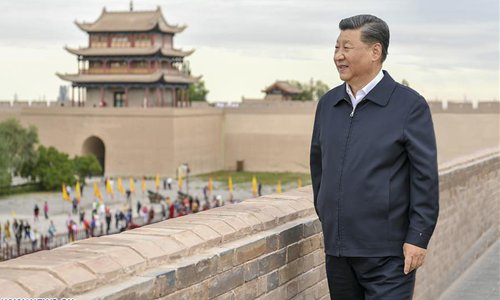
Virendra Pandit
New Delhi: After ‘unleashing’ Covid-19 pandemic in the world, China has been trying to ride the roughshod, boasting about recovering its economy and aggressively trying to thrust its products on markets through territorial expansion (as in Nepal), psychological warfare (as against India), plain blackmail (as in Pakistan), and the like.
Its single-point agenda is to expand territory and influence to the maximum while the world counts its Covid-19 dead, so to displace America as the global policeman.
Beijing is employing every trick in the trade to keep itself aloft in the sea of change the virus has brought about. It is leaving no stone unturned to hide its failures at home by feeding false ‘nationalist’ bravados overseas to hoodwink its own people.
But that may not last long as realities are dawning on experts. Many have predicted a sudden and imminent collapse of China like the USSR in the 1990s and its disintegration as a nation.
While China has been claiming for weeks that it is steadily recovering from the pandemic-triggered economic slump, experts say it will be a hard job for Beijing’s policymakers to continue a sustained economic expansion in the years to come.
Its export-based market economy may collapse anytime as the Covid-19 has squeezed out purchasing power from consumers across the world. This probable collapse will have a cascading effect within China due to closed factories and exponential unemployment leading to a Soviet Union-type quick meltdown.
Recently, Yan Naing, a pseudonym for an observer of Myanmar affairs, said in a media article that, early this year, for the first time since 1976, China had openly acknowledged a slump and economic downturn. The country recorded its lowest GDP growth in almost half a century in 2019, at 6.1 percent, and 2020 is going to be worse.
In an article carried by The Irrawaddy, Naing said, “On April 17, the National Bureau of Statistics had announced that the economy contracted by 6.8 percent compared to the same period a year before. Surprisingly, during the annual National People’s Congress of the Chinese Communist Party (CCP) on May 22, no GDP growth target was announced for the first time in 30 years.”
Even Chinese officials have cited “great uncertainty” due to the Covid-19 pandemic, which can be seen as an acknowledgment of the steep challenges the country faces amid a struggling economy and increasing international hostility. More than 200 countries have been infected by Covid-19, suspected to have originated in Wuhan, and 137 of them have sought a thorough WHO probe into the whole matter.
Naing said that the Covid-19 pandemic merely aggravated the difficult situation China’s economy was already experiencing, something the CCP sought to camouflage with its propaganda.
In the recent past, major banks like China Construction Bank and the Bank of China announced their biggest profit declines in a decade. Officially, the drop in GDP is at 6.8 percent, though the actual figures are suspected to be higher. This, despite–or because of–the government’s USD 559-billion (about 736.3 trillion kyats) revival package.
This decline in the Chinese economy is the result of fundamental problems accumulated over the years. Some of these are; reckless investment, low productivity, modest consumer spend, and gargantuan demographic changes due to excessive urbanization.
“In the 1990s and 2000s, China created wealth in a way that was appropriate to that time. Factories grew, producing competitive products for the whole world; miles of bridges and roads were built connecting cities and towns. These in turn created jobs and income-generating opportunities for the population, while expanding the productive potential of the economy.
“But such methods do not always increase a country’s growth potential: bridges and roads are literally being built “to nowhere”, just like “ghost towns”, Naing said.
In addition, China has piled up a huge amount of debt, both internally and externally. In 2019, China’s total corporate, household and government debt rose to USD 40 trillion, which is about 300 percent of its GDP and nearly 15 percent of all world debt.

Heavy Chinese government borrowing led Standard & Poor (S&P) to revise its estimated debt-to-GDP ratio to 273 per cent. Corporate debt, in particular, is massive, causing a closed loop of bad loans and bank stress. Data suggests that delays are likely in some Belt and Road Initiative (BRI) projects due to the pandemic, including in Pakistan, along with the cancellation of mega-projects such as a USD 10-billion refinery by Saudi Arabia, while major powers have declared their intention to “decouple” from China.
The report said that amid the economic slump, several industries and businesses in China have closed down, leading to massive layoffs, slowing wage growth, and growing unemployment. “While the rate of unemployment was 5.3 percent at the beginning of 2019, even the pro-government newspaper Global Times, in a published forecast, said the situation in 2020 would only get worse, with unemployment rising further and wages falling.
The latest reports now point to 80 million workers being rendered jobless post-pandemic and another 8.7 million joining their ranks of this year.
On May 28, Chinese Premier Li Keqiang had admitted that there are more than 600 million people in the country whose monthly income is not even 1,000 yuan, thus suggesting that the situation was worsening.
Besides, China is also facing a major food crisis after the recent flood devastated the farmlands, thus pushing the second-largest wheat producer in the world to import.













